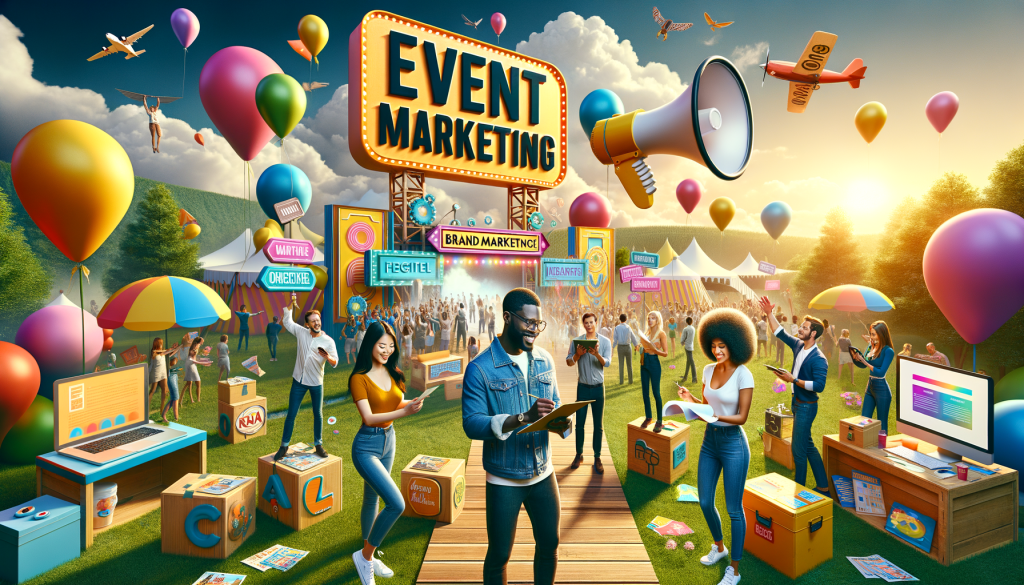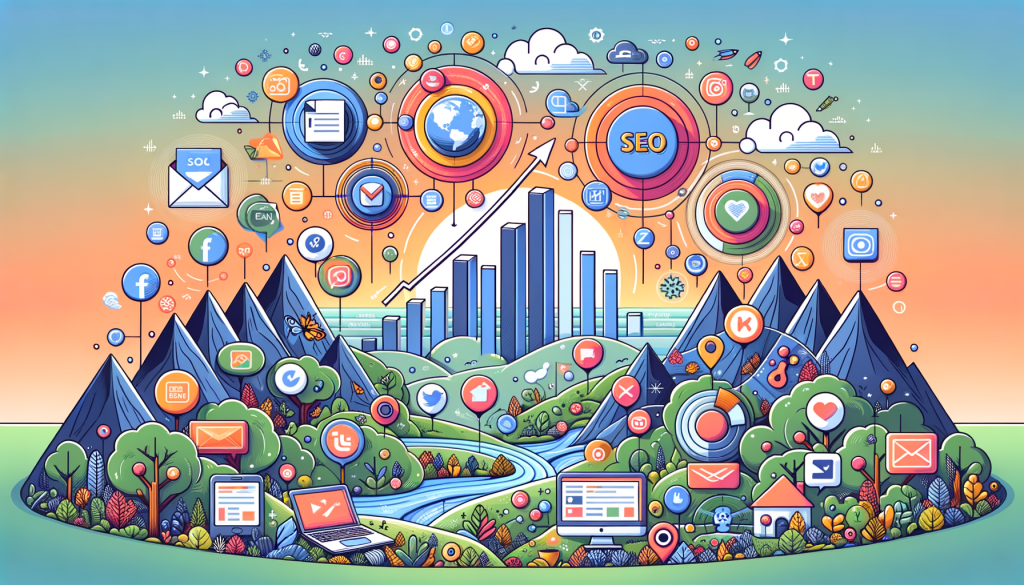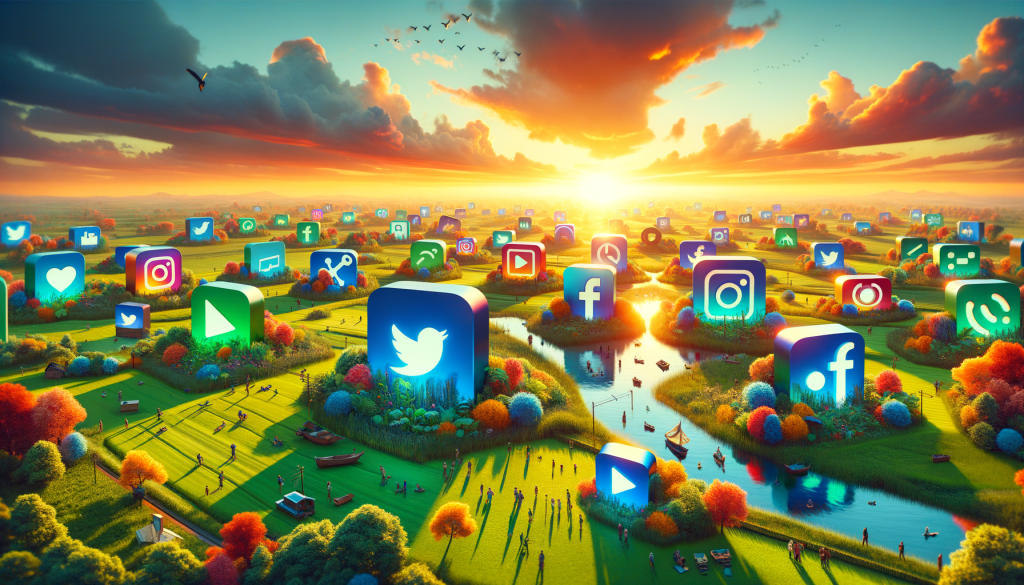The Power of Event Marketing: Enhancing Brand Experiences
Event marketing is a powerful tool for enhancing brand experiences. By creating memorable and engaging events, brands can leave a lasting impression on their target audience.
One of the key advantages of event marketing is the opportunity to connect with consumers on a personal level. Unlike traditional forms of advertising, events provide a platform for face-to-face interaction, allowing brands to build relationships and establish trust. Through meaningful conversations and interactions, brands can create a sense of authenticity and loyalty among attendees.
Event marketing also allows for the opportunity to showcase a brand’s products or services in a unique and experiential way. By providing hands-on demonstrations, interactive displays, and immersive experiences, brands can create a deeper understanding and appreciation for their offerings. This not only helps to educate consumers but also positions the brand as a leader in their industry.
Moreover, events offer brands the chance to generate buzz and excitement. By creating a sense of exclusivity and anticipation, brands can leverage the power of word-of-mouth marketing. Attendees are more likely to share their positive experiences with others, both online and offline, further extending the reach and impact of the event.
In addition to enhancing brand experiences, event marketing also provides valuable opportunities for market research and feedback. By engaging directly with their target audience, brands can gather insights and feedback in real-time. This information can then be used to refine products, services, and marketing strategies, ensuring that the brand remains relevant and responsive to consumer needs.
In conclusion, event marketing is a highly effective strategy for creating memorable brand experiences. Through face-to-face interactions, immersive experiences, and the power of word-of-mouth, brands can build relationships, generate excitement, and gather valuable insights. By leveraging the unique benefits of event marketing, brands can leave a lasting impact on their target audience and differentiate themselves from competitors.
Designing Unforgettable Events: Strategies for Success
Designing unforgettable events is a crucial aspect of event marketing. By creating memorable brand experiences, businesses can leave a lasting impression on their target audience and build strong brand loyalty. Here are some strategies for success:
- Understand your target audience: Before planning an event, it is essential to have a deep understanding of your target audience. Consider their demographics, interests, and preferences to create an experience that resonates with them.
- Create a unique theme: A well-defined theme adds excitement and cohesiveness to an event. Choose a theme that aligns with your brand and appeals to your audience. Ensure that all elements of the event, such as decor, activities, and entertainment, are consistent with the theme.
- Focus on experiential marketing: Engage attendees by providing interactive and immersive experiences. Incorporate elements that allow participants to actively participate and create memories. This could include hands-on demonstrations, interactive games, or virtual reality experiences.
- Utilize technology: Leverage technology to enhance the event experience. Use event apps or websites to provide attendees with relevant information, facilitate networking, and offer personalized recommendations. Incorporate interactive displays, digital signage, or augmented reality to create a futuristic and engaging atmosphere.
- Collaborate with influencers: Partnering with influencers can amplify your event’s reach and credibility. Identify influencers who align with your brand and have a significant following within your target audience. Invite them to attend or participate in the event, and encourage them to share their experiences on social media.
- Offer exclusive perks: Provide exclusive perks or incentives to attendees to make the event memorable. This could include VIP access, early entry, special discounts, or limited edition merchandise. Creating a sense of exclusivity can generate excitement and make attendees feel valued.
- Create shareable moments: Design elements that encourage attendees to share their experiences on social media. Set up Instagrammable photo booths, create unique backdrops, or organize contests that require participants to post on social platforms. User-generated content can significantly increase brand visibility and reach.
- Follow up after the event: Don’t forget to follow up with attendees after the event. Send personalized thank-you emails, surveys, or exclusive offers to show appreciation for their participation. This helps to maintain a positive brand relationship and keeps your brand top-of-mind.
Engaging Participants: Interactive Elements That Leave a Lasting Impression
Engaging Participants: Interactive Elements That Leave a Lasting Impression
When it comes to event marketing, creating memorable brand experiences is essential. One way to achieve this is by incorporating interactive elements that capture the attention of participants and leave a lasting impression. By offering opportunities for engagement and interaction, you can enhance the overall event experience and strengthen the connection between attendees and your brand.
There are several types of interactive elements that can be incorporated into your event to engage participants:
- 1. Gamification: Creating games or challenges that encourage attendees to interact with your brand can be highly effective. This can include scavenger hunts, trivia contests, or interactive quizzes. By offering incentives or prizes, you can further motivate participants to engage and compete with one another.
- 2. Virtual Reality (VR) Experiences: Immersive technologies like VR can transport participants to different worlds and provide a unique brand experience. Whether it’s a virtual tour of your company or a virtual reality game related to your products or services, VR can create a memorable and interactive experience.
- 3. Interactive Displays: Incorporating touch screens, interactive kiosks, or displays can provide participants with a hands-on experience. This can include product demonstrations, interactive presentations, or even interactive art installations that allow attendees to create their own artwork.
- 4. Live Demonstrations and Experiences: Giving participants the opportunity to see your products or services in action can be highly engaging. Whether it’s a live cooking demonstration, a fashion show, or a car test drive, providing hands-on experiences can leave a lasting impression on attendees.
- 5. Social Media Walls and Photo Booths: Creating opportunities for participants to share their experience on social media can generate buzz and increase brand visibility. Social media walls that display real-time posts or photo booths that allow attendees to take branded photos can encourage interaction and create user-generated content.
By incorporating these interactive elements into your event, you can create a memorable brand experience that participants will remember long after the event is over. These interactive elements not only engage attendees but also provide opportunities for them to connect with your brand on a deeper level.
Building Brand Awareness: Leveraging Events to Reach a Wider Audience
One of the most effective ways to build brand awareness is through leveraging events. Events provide a unique opportunity to reach a wider audience and create memorable brand experiences. By strategically planning and executing event marketing campaigns, businesses can maximize their reach and impact.
There are several ways to leverage events for building brand awareness:
- Create a strong presence at industry conferences and trade shows. These events attract a large number of people who are already interested in your industry. By setting up an eye-catching booth, offering engaging activities, and providing valuable information, you can capture the attention of attendees and leave a lasting impression.
- Host your own events. Whether it’s a product launch, a workshop, or a networking event, hosting your own event allows you to have complete control over the brand experience. These events can be tailored to your target audience and designed to showcase your products or services in a memorable way.
- Collaborate with influencers and thought leaders. By partnering with influencers and thought leaders in your industry, you can leverage their existing audience and credibility to promote your brand. Inviting them to speak at your event or having them endorse your products can significantly increase your brand’s reach and credibility.
- Engage with attendees through experiential marketing. Experiential marketing focuses on creating immersive and interactive experiences that allow attendees to engage with your brand on a deeper level. This can include activities such as virtual reality demos, interactive games, or live demonstrations that showcase your products or services.
By leveraging events, businesses can tap into a wider audience and create memorable brand experiences that leave a lasting impact. Through careful planning, collaboration, and experiential marketing, events can be a powerful tool for building brand awareness and driving business growth.
Measuring Event Success: Key Metrics for Evaluating Brand Impact
Measuring the success of an event is crucial for evaluating the impact it has on a brand. By analyzing key metrics, event marketers can gain valuable insights into the effectiveness of their strategies and make informed decisions for future events. Here are some important metrics to consider when evaluating the brand impact of an event:
- Attendance: The number of attendees is a fundamental metric that indicates the level of interest and engagement in the event. Tracking attendance can help determine the event’s reach and potential impact on brand exposure.
- Engagement: Measuring attendee engagement is essential for understanding the level of interaction and connection between the brand and its audience. This can be assessed through various metrics such as social media mentions, interactions, and survey responses.
- Brand Awareness: Evaluating brand awareness before and after the event provides insights into how well the event succeeded in increasing the visibility and recognition of the brand. Surveys and social media analytics can be used to gauge changes in brand awareness.
- Lead Generation: Events are an excellent opportunity for lead generation. Tracking the number of leads generated during or as a result of the event can help measure its impact on potential customers and future business opportunities.
- Customer Satisfaction: Assessing attendee satisfaction with the event is crucial for understanding whether the brand experience was positive or not. Post-event surveys can help measure customer satisfaction and identify areas for improvement.
- Return on Investment (ROI): Analyzing the financial impact of an event is essential for determining its overall success. This can be done by comparing the event’s costs to the revenue generated, new leads acquired, or any other measurable outcomes.
By utilizing these key metrics, event marketers can gain a comprehensive understanding of the brand impact of their events. This data-driven approach enables them to make informed decisions, improve future event strategies, and create more memorable brand experiences.
Future Trends in Event Marketing: Innovations to Look Out For
As event marketing continues to evolve, there are several future trends and innovations that brands should look out for to create memorable brand experiences. These trends are driven by advancements in technology, changes in consumer behavior, and the need for more immersive and interactive experiences.
One of the key trends to watch out for is the integration of virtual and augmented reality into event marketing. These technologies have the potential to transport attendees to different locations, provide interactive product demonstrations, and create unique and memorable experiences. Brands can use virtual reality to showcase their products or services in a virtual environment, allowing attendees to explore and interact with them in a way that was not possible before. Augmented reality, on the other hand, can be used to overlay digital information onto the real world, allowing brands to enhance their physical spaces and provide additional information or entertainment.
Another trend that is gaining momentum is the use of artificial intelligence and machine learning in event marketing. These technologies can help brands personalize their interactions with attendees, analyze data in real-time, and provide targeted recommendations. For example, AI-powered chatbots can assist attendees with their queries, recommend sessions or activities based on their preferences, and even provide personalized offers or discounts. Machine learning algorithms can also analyze attendee data to identify patterns and trends, helping brands optimize their event experiences and make data-driven decisions.
Mobile technology is also playing a significant role in shaping the future of event marketing. With the widespread use of smartphones and mobile apps, brands can leverage these devices to enhance attendee engagement and provide personalized experiences. Mobile apps can be used to facilitate event registration, provide real-time updates and notifications, offer interactive maps and schedules, and enable networking among attendees. Brands can also use mobile technology to collect valuable data on attendee behavior and preferences, allowing them to tailor their marketing efforts and improve future events.
Lastly, sustainability and eco-friendly practices are becoming increasingly important in event marketing. Brands are incorporating sustainable elements into their events, such as using renewable energy sources, reducing waste, and promoting eco-friendly transportation options. This not only aligns with the values of environmentally conscious consumers but also creates a positive brand image and enhances the overall event experience.
In conclusion, the future of event marketing is filled with exciting trends and innovations. From virtual and augmented reality to artificial intelligence and mobile technology, brands have numerous opportunities to create memorable and immersive brand experiences. By embracing these trends and incorporating them into their event strategies, brands can stay ahead of the curve and leave a lasting impression on their attendees.






I attended a branded event last year and I must say it left a lasting impression. The way they integrated their brand into every aspect of the event was incredible. It wasn’t just about selling products; it was about creating an experience that resonated with the attendees. I would love to know more about how to measure the success of such events and how to effectively engage the audience on an emotional level.
As a marketing professional, I’ve seen the power of event marketing firsthand. It allows brands to connect with their audience in a way that traditional advertising simply can’t. The key is to create an experience that is not only memorable but also aligns with the brand’s values and message. I’d be interested in learning more about how to effectively leverage social media and technology to enhance brand experiences at events.
I’ve always been curious about the logistics of organizing a successful branded event. How do you ensure that every touchpoint reflects the brand identity? And how do you measure the return on investment for such events? I believe that creating memorable brand experiences is crucial in today’s competitive market, but it’s essential to have a clear strategy in place. I’d love to hear more about best practices and case studies in this area.